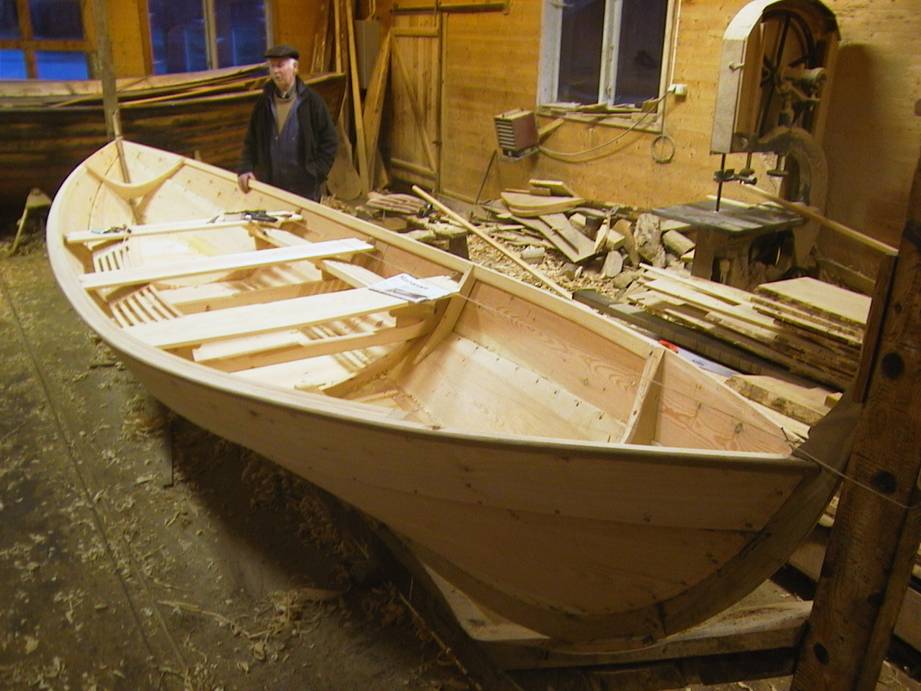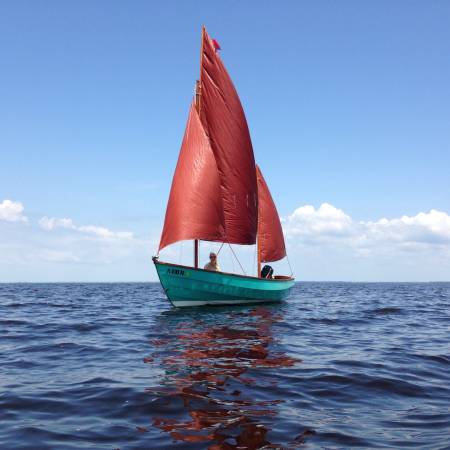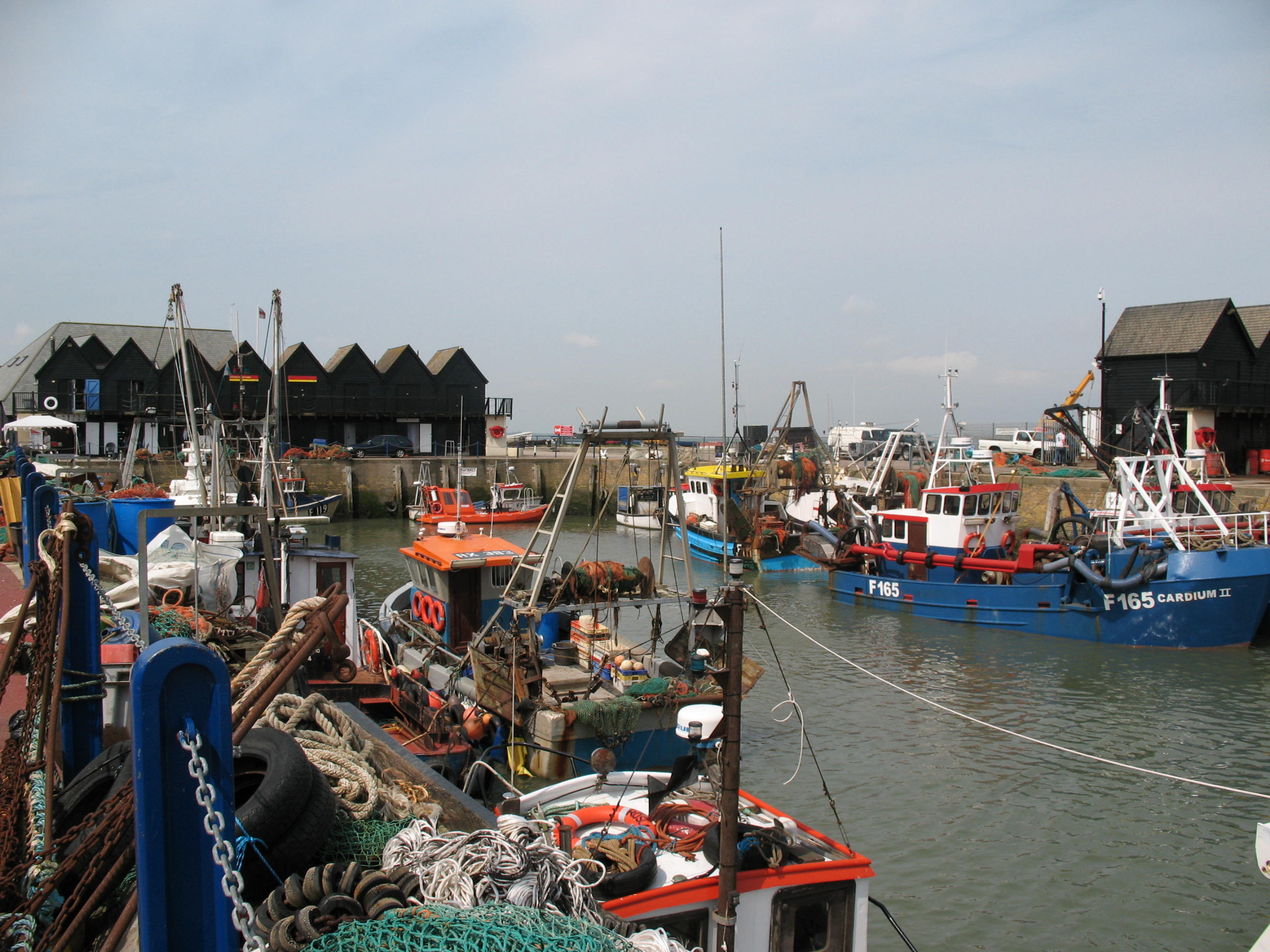|
Yawl
A yawl is a type of boat. The term has several meanings. It can apply to the rig (or sailplan), to the hull type or to the use which the vessel is put. As a rig, a yawl is a two masted, fore and aft rigged sailing vessel with the mizzen mast positioned abaft (behind) the rudder stock, or in some instances, very close to the rudder stock. This is different from a ketch, where the mizzen mast is forward of the rudder stock. The sail area of the mizzen on a yawl is consequentially proportionately smaller than the same sail on a ketch. As a hull type, yawl may refer to many types of open, clinker-built, double-ended, traditional working craft that operated from the beaches of Britain and Ireland. These boats are considered to be linked to the Viking or Nordic design tradition. Most of these types are now extinct, but they include the Norfolk and Sussex Beach Yawls (called "yols" by the men who crewed them), which were probably the fastest-sailing open boats ever built. A yawl i ... [...More Info...] [...Related Items...] OR: [Wikipedia] [Google] [Baidu] |
Ketch
A ketch is a two- masted sailboat whose mainmast is taller than the mizzen mast (or aft-mast), and whose mizzen mast is stepped forward of the rudder post. The mizzen mast stepped forward of the rudder post is what distinguishes the ketch from a yawl, which has its mizzen mast stepped aft of its rudder post. In the 19th and 20th centuries, ketch rigs were often employed on larger yachts and working watercraft, but ketches are also used as smaller working watercraft as short as 15 feet, or as small cruising boats, such as Bill Hanna's Tahiti ketches or L. Francis Herreshoff's Rozinante and H-28. The name ketch is derived from ''catch''. The ketch's main mast is usually stepped further forward than the position found on a sloop. The sail plan of a ketch is similar to that of a yawl, on which the mizzen mast is smaller and set further back. There are versions of the ketch rig that only has a mainsail and a mizzen, in which case they are referred to as ''cat ketch''. More common ... [...More Info...] [...Related Items...] OR: [Wikipedia] [Google] [Baidu] |
Mizzen
The mast of a sailing vessel is a tall spar, or arrangement of spars, erected more or less vertically on the centre-line of a ship or boat. Its purposes include carrying sails, spars, and derricks, and giving necessary height to a navigation light, look-out position, signal yard, control position, radio aerial or signal lamp. Large ships have several masts, with the size and configuration depending on the style of ship. Nearly all sailing masts are guyed. Until the mid-19th century, all vessels' masts were made of wood formed from a single or several pieces of timber which typically consisted of the trunk of a conifer tree. From the 16th century, vessels were often built of a size requiring masts taller and thicker than could be made from single tree trunks. On these larger vessels, to achieve the required height, the masts were built from up to four sections (also called masts). From lowest to highest, these were called: lower, top, topgallant, and royal masts. Giving th ... [...More Info...] [...Related Items...] OR: [Wikipedia] [Google] [Baidu] |
Drascombe Lugger
The Drascombe Lugger is a British trailerable sailboat that was designed by John L. Watkinson and first built in 1968. The Drascombe Lugger design is the basis of a large range of similar Drascombe boats with different hull, cabin and rig configurations. Production The design is built by Honnor Marine Classics and also by Churchouse Boats, now called Drascombe Boats in the United Kingdom. Production started in 1968, with more than 2,000 boats completed and the design remains in production. Design The boat was designed by Watkinson, who was a former Royal Navy officer. In the early 1960s he wanted to build a small boat for his own family use. His design goals were for a day sailer with trailerability, that would be stable and safe, but still exciting to sail for experienced sailors. The prototype was built of wood on a farm in Drascombe Barton. The design was based upon the fishing boats used on England's northeastern coast, which trace their lineage back to the Vikin ... [...More Info...] [...Related Items...] OR: [Wikipedia] [Google] [Baidu] |
Yoal
The yoal, often referred to as the ness yoal, is a clinker-built craft used traditionally in Shetland, Scotland. It is designed primarily for rowing, but also handles well under its traditional square sail when running before the wind or on a broad reach. The word is cognate with yawl and yole. Construction Until about 1860, yoals were imported in kit form from the area around Bergen in Norway. The traditional small wooden boats were known as either Strandebarmer or Oselvar from Os in Hordaland, Norway. The wooden boats were taken apart and then 'flat packed' for shipping to the Shetland Islands. Instead of sending complicated assembly instructions, they sent Norwegian boatbuilders to re-build them. However, increasing customs duty meant that Shetland builders took over the building but stayed mostly with the original Norwegian design. All the parts of a yoal have a name, perhaps to make assembly easier when they came in kit form, or to make it easier to order spare parts. I ... [...More Info...] [...Related Items...] OR: [Wikipedia] [Google] [Baidu] |
Ship's Boat
A ship's boat is a utility boat carried by a larger vessel. Ship's boats have always provided communication with the shore and with other ships. Other work done by such boats has varied over time, as marine technology has changed. In the age of sail, especially for warships, an important role was the collection of drinking water. A large enough boat may be needed to carry an anchor to some distance away from the ship, so as to kedge out of a harbour or away from a hazard - and also to recover such an anchor afterwards. Warships have always used their boats as an extension to their military role. This includes the provision of a means of escape for the crews of fireships, the landing of troops, or the "cutting out" raids that were used by the Royal Navy, especially during the Napoleonic Wars. All these requirements competed with the need to be able to stow the boats on board in a way that did not interfere with the normal operation of the ship. Historically, ship’s boats had ... [...More Info...] [...Related Items...] OR: [Wikipedia] [Google] [Baidu] |
Falmouth Quay Punt
The Falmouth Quay Punt was a type of working sailing vessel in the port of Falmouth, Cornwall in the 19th and early 20th century. They would be hired by merchant ships anchored in Carrick Roads – to carry stores, mail and passengers. Falmouth, with a good deep water harbour situated near the Western entrance to the English Channel, was a popular port for merchant sailing ships to call "for orders". Before the days of radio, captains would often not know which port their cargo would be destined for before they arrived in the country, and needed to collect instructions before continuing. The Falmouth Quay Punt got its name from operating from Falmouth's Custom House Quay, where shipping agent's had their offices. The term "punt" was commonly used around the British coast for a smaller version of the local working craft, often an open boat, propelled by oar and/or sail. Functions Ships coming to anchor in the Carrick Roads would employ a Falmouth Quay Punt to be a runabout whil ... [...More Info...] [...Related Items...] OR: [Wikipedia] [Google] [Baidu] |
Cutter (boat)
A cutter is a type of watercraft. The term has several meanings. It can apply to the rig (or sailplan) of a sailing vessel (but with regional differences in definition), to a governmental enforcement agency vessel (such as a coast guard or border force cutter), to a type of ship's boat which can be used under sail or oars, or, historically, to a type of fast-sailing vessel introduced in the 18th century, some of which were used as small warships. As a sailing rig, a cutter is a single-masted boat, with two or more headsails. On the eastern side of the Atlantic, the two headsails on a single mast is the fullest extent of the modern definition. In U.S. waters, a greater level of complexity applies, with the placement of the mast and the rigging details of the bowsprit taken into account so a boat with two headsails may be classed as a sloop. Government agencies use the term "cutter" for vessels employed in patrolling their territorial waters and other enforcement activities. T ... [...More Info...] [...Related Items...] OR: [Wikipedia] [Google] [Baidu] |
Fore-and-aft Rig
A fore-and-aft rig is a sailing vessel rigged mainly with sails set along the line of the keel, rather than perpendicular to it as on a square rigged vessel. Description Fore-and-aft rigged sails include staysails, Bermuda rigged sails, gaff rigged sails, gaff sails, gunter rig, lateen sails, lug sails, tanja sails, the spanker sail on a square rig and crab claw sails. Fore-and-aft rigs include: * Rigs with one mast: the proa, the catboat, the sloop, the cutter * Rigs with two masts: the ketch, the yawl * Rigs with two or more masts: the schooner Barques and barquentines are partially square rigged and partially fore-and-aft rigged. A rig which combines both on a foremast is known as a hermaphroditic rig. History Austronesia The fore-and-aft rig is believed to have been first developed independently by the Austronesian peoples some time around 1500 BC with the invention of the crab claw sail. It is suggested that it evolved from a more primitive "V"-shaped "sq ... [...More Info...] [...Related Items...] OR: [Wikipedia] [Google] [Baidu] |
Drascombe Lugger Sailboat 3912
The word Drascombe is a trademark that was first registered by John Watkinson who applied it to a series of sailing boats which he designed and built in the period 1965–79 and sold in the United Kingdom (UK). They comprised the Coaster, Cruiser Longboat, Dabber, Drifter, Driver, Gig, Launch, Longboat, Lugger, Peterboat, Scaffie, Scaith and Skiff, together with a few other one-offs. They have wide and deep cockpits, adaptable boomless rigs and high bulwarks. The word drascombe is also used as a generic term for any boat built to a design by John Watkinson. These include both 'the Drascombe range' build by Churchouse Boats Churchouse Boats ltd . Accessed 28 August 2009. and the 'Original Devon' range produced by Honnor Marine, [...More Info...] [...Related Items...] OR: [Wikipedia] [Google] [Baidu] |
Sloop
A sloop is a sailboat with a single mast typically having only one headsail in front of the mast and one mainsail aft of (behind) the mast. Such an arrangement is called a fore-and-aft rig, and can be rigged as a Bermuda rig with triangular sails fore and aft, or as a gaff-rig with triangular foresail(s) and a gaff rigged mainsail. Sailboats can be classified according to type of rig, and so a sailboat may be a sloop, catboat, cutter, ketch, yawl, or schooner. A sloop usually has only one headsail, although an exception is the Friendship sloop, which is usually gaff-rigged with a bowsprit and multiple headsails. If the vessel has two or more headsails, the term cutter may be used, especially if the mast is stepped further towards the back of the boat. When going before the wind, a sloop may carry a square-rigged topsail which will be hung from a topsail yard and be supported from below by a crossjack. This sail often has a large hollow foot, and this foot is sometimes ... [...More Info...] [...Related Items...] OR: [Wikipedia] [Google] [Baidu] |
Alec Rose
Sir Alec Rose (13 July 1908 – 11 January 1991) was a nursery owner and fruit merchant in England who, after serving in the Royal Navy during World War II, developed a passion for amateur single-handed sailing. He took part in the second single-handed Atlantic race in 1964 and circumnavigated the globe single-handedly in 1967–68, for which he was knighted. His boat '' Lively Lady'' is still seaworthy and is used for sail training by a charity. Naval career Alec Rose was born in Canterbury. During World War II he served in the Royal Navy as a diesel mechanic on a convoy escort, HMS ''Leith''. ''Lively Lady'' After the war, Rose learned to sail in a former ship's lifeboat before buying the 36-foot cutter ''Lively Lady'' second-hand. ''Lively Lady'' was built of paduak by S. J. P. Cambridge, the previous owner, in Calcutta, with the help of two Indian cabinetmakers. Cambridge had studied boat design during the war, and ''Lively Lady'' was basic, but sturdy and stable. In 2015, t ... [...More Info...] [...Related Items...] OR: [Wikipedia] [Google] [Baidu] |
Whitstable
Whitstable () is a town on the north coast of Kent adjoining the convergence of the Swale Estuary and the Greater Thames Estuary in southeastern England, north of Canterbury and west of Herne Bay. The 2011 Census reported a population of 32,100. The town, formerly known as Whitstable-on-Sea, was famous for its 'Native Oysters' which were collected from beds beyond the low water mark from Roman times until the mid-20th century. The annual Whitstable Oyster Festival takes place during the summer. In 1830, one of the earliest passenger railway services was opened by the Canterbury and Whitstable Railway Company. In 1832 the company built a harbour and extended the line to handle coal and other bulk cargos for the City of Canterbury. The railway has closed but the harbour still plays an important role in the town's economy. The railway route, known as The Crab and Winkle Line, is now a cycle path which leads to the neighbouring city of Canterbury. History Archaeological fi ... [...More Info...] [...Related Items...] OR: [Wikipedia] [Google] [Baidu] |


.jpg)







